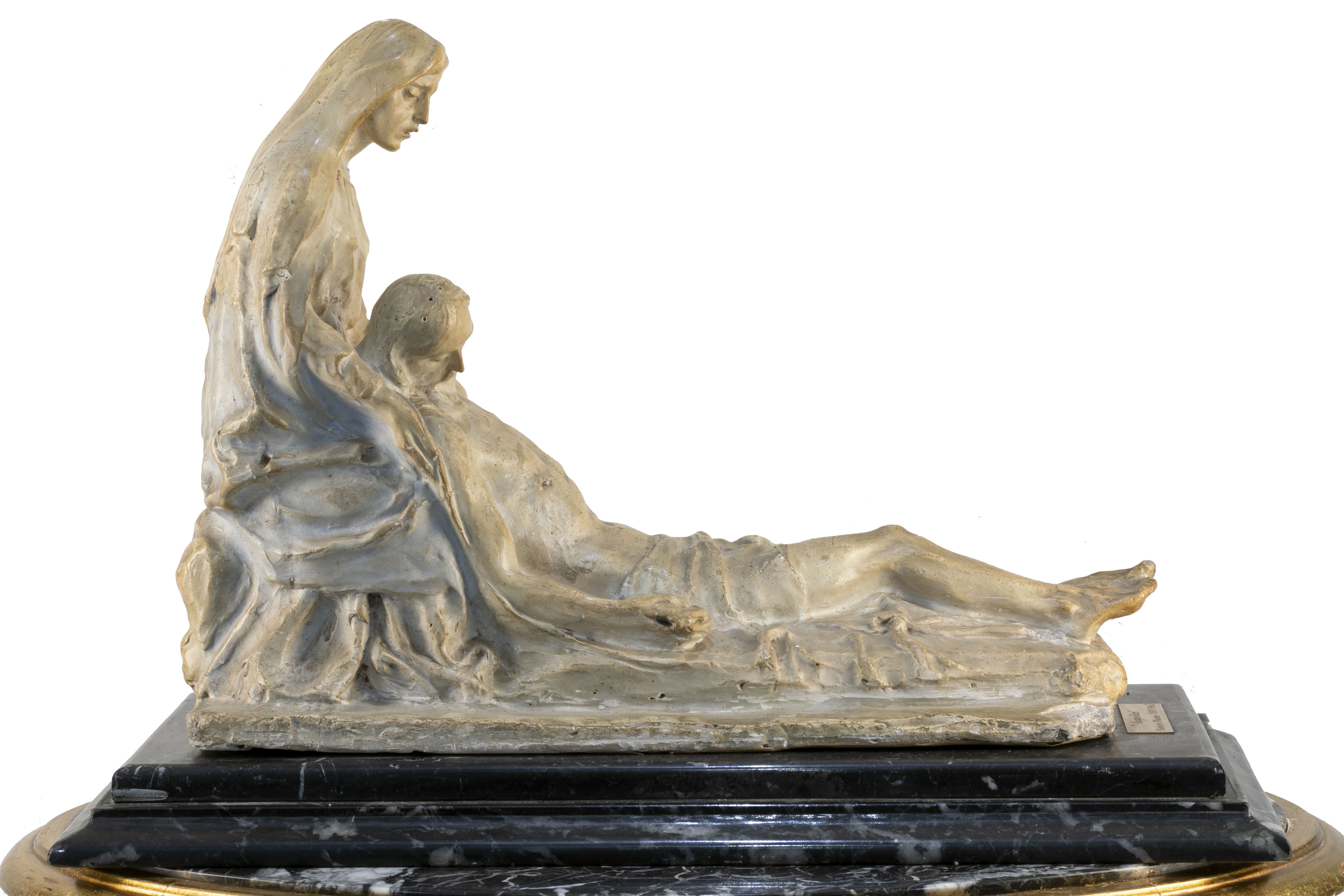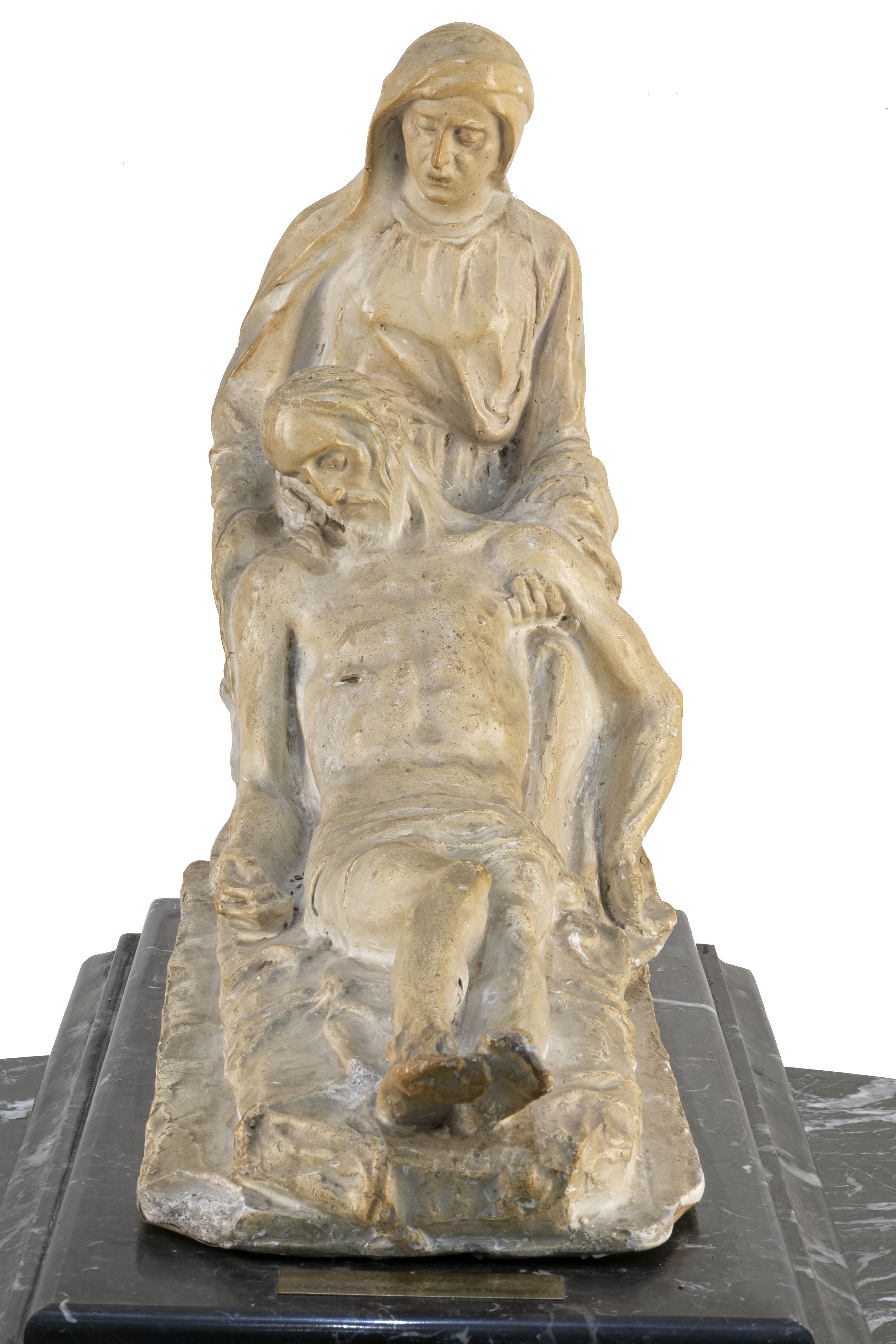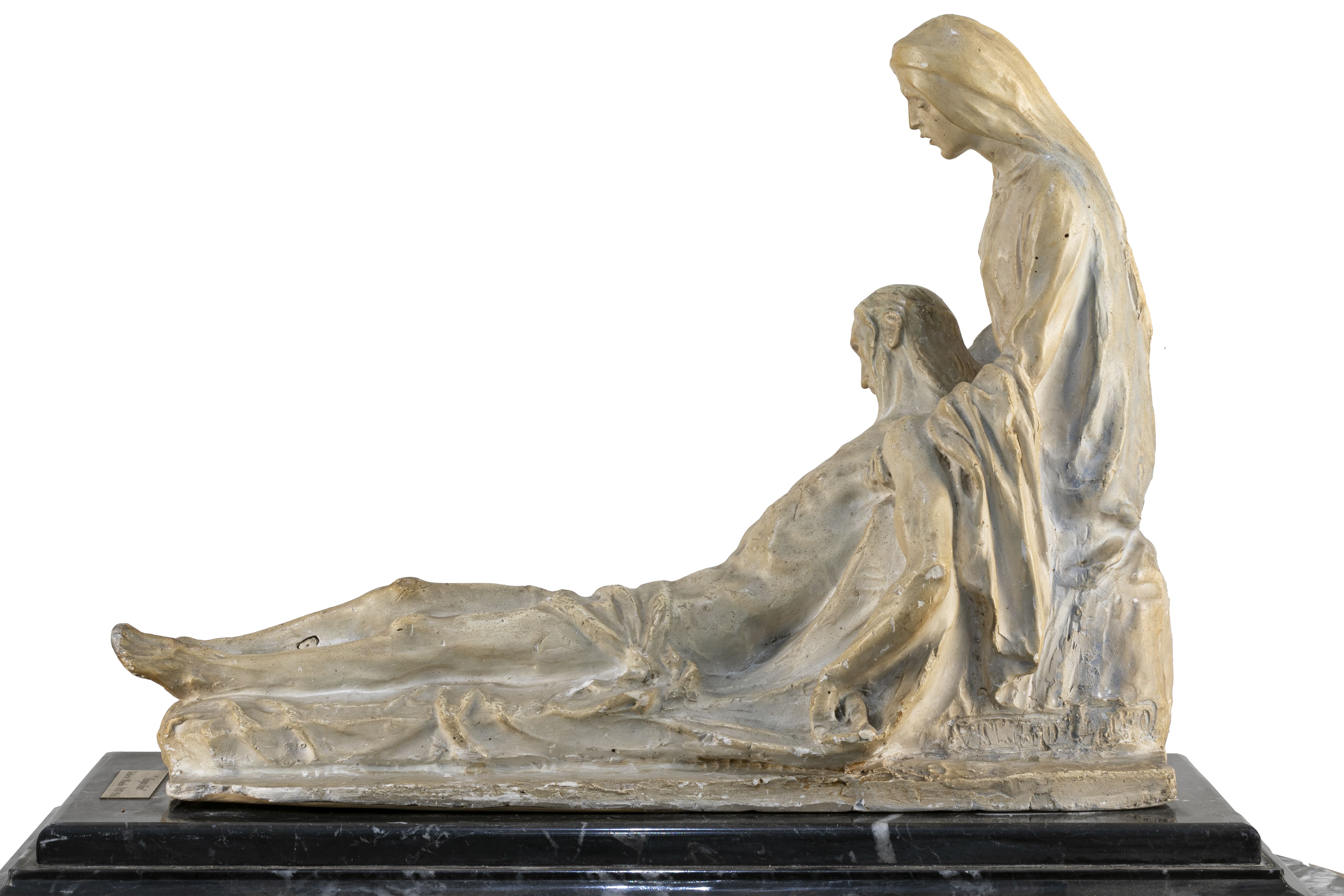Art & Antiques Bella Epoca > escultura
Piedad - Victorio Macho (Palencia, 1887 - Toledo, 1966)
Description
Plaster sculpture, Marble base - Victorio Macho (Palencia, 1887 - Toledo, 1966).
Measures 49cm high x 61cm wide
Victorio Macho Rogado was born in the Calle de los Pastores in the city of Palencia in 1887, into a humble family. His father was a cabinetmaker. Given the interest that the world of art aroused in the young man, his parents decided to enroll him in the School of Fine Arts and Crafts in Santander, where he learned to sculpt. In 1903, at the age of sixteen and with a pension from the Diputación de Palencia, he moved to Madrid, continuing his studies at the Royal Academy of Fine Arts of San Fernando. His work and efforts are ignored for three decades, until he receives the official commission from the grave of Dr. Llorente. Then he achieved fame with his first monument to Galdós and was consecrated in the exhibition of the Museum of Modern Art in 1921. At that time he set up his studio-house in the Las Vistillas neighborhood, and then moved to another on the painter Rosales promenade. .2
He left Spain during the Primo de Rivera dictatorship and settled in Hendaye, France; sculpts Unamuno and Ramón y Cajal. In 1936 he was appointed academic by one of the centers where he was formed, the San Fernando Academy of Fine Arts. He leaves Madrid at the outbreak of the Spanish Civil War, together with the Government of the Republic, to Valencia. The outcome of the civil war led him to thirteen years of exile in France, Russia, and then in America. After residing for six months in Colombia, he began a long stay in Lima, where he married Zoila Barrós Conti. He returned to Spain in 1952, installing his house and workshop in Toledo, in the same building that since 1967 is the Victorio Macho House-Museum (also called Roca Tarpeya) created to house his legacy, which was donated after his death to the Spanish State.
In 1964, he was knighted as Grand Cross of the Order of Isabel la Católica.3 Two years later, in 1966, he died in Toledo, a victim of a silicosis that had been diagnosed in 1952; his remains were transferred to Palencia, following his last wishes, and buried under the hermitage at the foot of Cristo del Otero, one of his great works. On July 13, 2017, the anniversary of the artists death, a monument was inaugurated in his honor in his hometown of Palencia, located on Calle Mayor. The monument consists of a bronze sculptural group on a pedestal that represents the sculptor modeling the Christ of the Otero. The author was Luis Alonso.4
Price
*You must be registered to see the price of this item.
 REGISTER WITH WHATSAPP
REGISTER WITH WHATSAPP* If you don't want to register, you can call us at 659 053 479 for more information.
 NATIONAL AND INTERNATIONAL SHIPPING INSURED UP TO YOUR HOME. FREE IN ANDALUCIA
NATIONAL AND INTERNATIONAL SHIPPING INSURED UP TO YOUR HOME. FREE IN ANDALUCIA 










